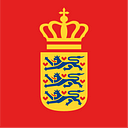5 Questions with Kristian Lever
The accomplished choreographer talks about the power of choreography and his latest work UnRavel.
The world’s leading dance companies will soon be landing in Texas to participate in the 27th edition of the globally renowned three-day Dance Salad Festival — Houston’s annual celebration of classical, modern and contemporary dance.
Originating in Brussels, Belgium in 1992 and exported to Houston in 1995, the Dance Salad Festival will run from April 18th to April 20th, promising a display of world-class performers, compelling choreography and signature musical arrangements.
And famed choreographer Kristian Lever will be there.
Kristian Lever has performed works from some of the most established choreographers today including Jiri Kylian, Nacho Duato, Ohad Naharin, Marco Goecke, Natalia Horecna, and John Neumeier. At Dance Salad, however, he unveils his latest project, UnRavel, a fantastical new work featuring two dancers from the Royal Danish Ballet and accompanied by Danish virtuoso Niklas Walentin.
Denmark In New York spoke with Kristian about UnRavel, his expectations for Dance Salad and the power of choreography.
Denmark In New York: What is your background and how did you become part of this year’s Dance Salad Festival in Houston?
Kristian Lever: I was born in London, England and I grew up in Helsinki, Finland where I began dancing. My dance training in Helsinki led me to move to Moscow, Russia and Dresden, Germany to further my training. I value my international experiences as they gave me knowledge and experience within a wide range of different movement and dance styles.
It was in Hamburg under the direction of John Neumeier and Kevin Haigen, where I was offered my first professional engagement as a choreographer. Receiving the trust and responsibility at the early age of only 20 to create for the German National Youth Ballet was a great opportunity. Since then I have created a variety of works the German National Youth Ballet, the Croatian National Ballet Rijeka, Ukrainian National Ballet, the Royal Danish Ballet, the Hamburg Ballet (with which he recently was awarded the Erik Bruhn prize, hosted by the National Ballet of Canada), as well for dancers of Nederlands Dans Theater, Hessisches Staatsballett, Royal Ballet and many others.
Well, I happened to be in contact with Dance Salad Festival director Nancy Henderek. I forwarded her some work of mine and she asked to review more. She came across UnRavel which was choreographed on the dancers of the Royal Danish Ballet. She expressed that she wanted to invite the work and the dancers to Houston to perform it at Dance Salad Festival. I put her in contact with Nikolaj Hübbe the Artistic Director of the Royal Danish Ballet, and luckily enough all schedules alined well together. Personally, I am thrilled and excited to be presenting UnRavel at the Dance Salad Festival courtesy of the Royal Danish Ballet.
You are choreographing UnRavel, how would you describe the performance?
I would describe UnRavel as a simple expression of intimate communication and connection. While remaining intimate, there is an uncertainty between not only the dancers themselves and their relationship, but their relationship to the music. I identify Maurice Ravel’s Pavane pour une infante défunte as one of the most melancholic yet hopeful scores I’ve ever come across. Quoting my own mother regarding theatre, film or music, “the most beautiful love, is the tragic love”. I wouldn’t necessarily describe UnRavel as tragic, however it carries a sense of melancholic hope, that I believe all of us have or at one point will experience in our own lives.
What kind of story do you aspire to tell with the performance?
I am fascinated by stories that address human relationships and emotions. Though I believe dance is a very unsatisfactory medium for telling a storyline, it is however, a very efficient way of expressing an emotion, state or atmosphere. Using body language as my guideline, I strive to address subject matters that are universal. Yearning to engage with a diverse audience, I hope to be able to create dance works that leave the audience tapping into their own emotions, asking questions and feeling connected.
UnRavel is inspired by the idea of a conversation between two individuals. Dealing with their relationship late at night, behind closed doors. As the conversation goes on, further unexpected topics and emotions unfold and reveal the turmoil amongst them. There is the difficulty to find patience and harmony with each other, yet not being able to let go.
What has been the most exciting part of choreographing work for the Royal Danish Ballet Dancers?
I truly enjoy working with the dancers of the Royal Danish Ballet. The dancers I have been fortunate to work with are not only vastly talented and experienced artists, but are extremely open minded, willing, and wanting to explore further into the work. Accepting challenges without hesitation, they are rather fearless diving into new movement vocabulary and approaches to work, leaving space for choreographers to explore boundaries.
What kind of reactions do you hope to generate from the US/Dance Salad audience?
Naturally I hope the audience in Houston will enjoy the aesthetics of the work, regarding movement, composition, music etc. However, my biggest hope would be to connect to the audience on an emotional level with the performance of UnRavel. My greatest goal would be that the viewer feels represented on stage, allowing them to identify themselves with the dancers, the scenario and the emotions of the performance.
Ema Seferovic is the Press and Communications Intern at DenmarkInNY.
